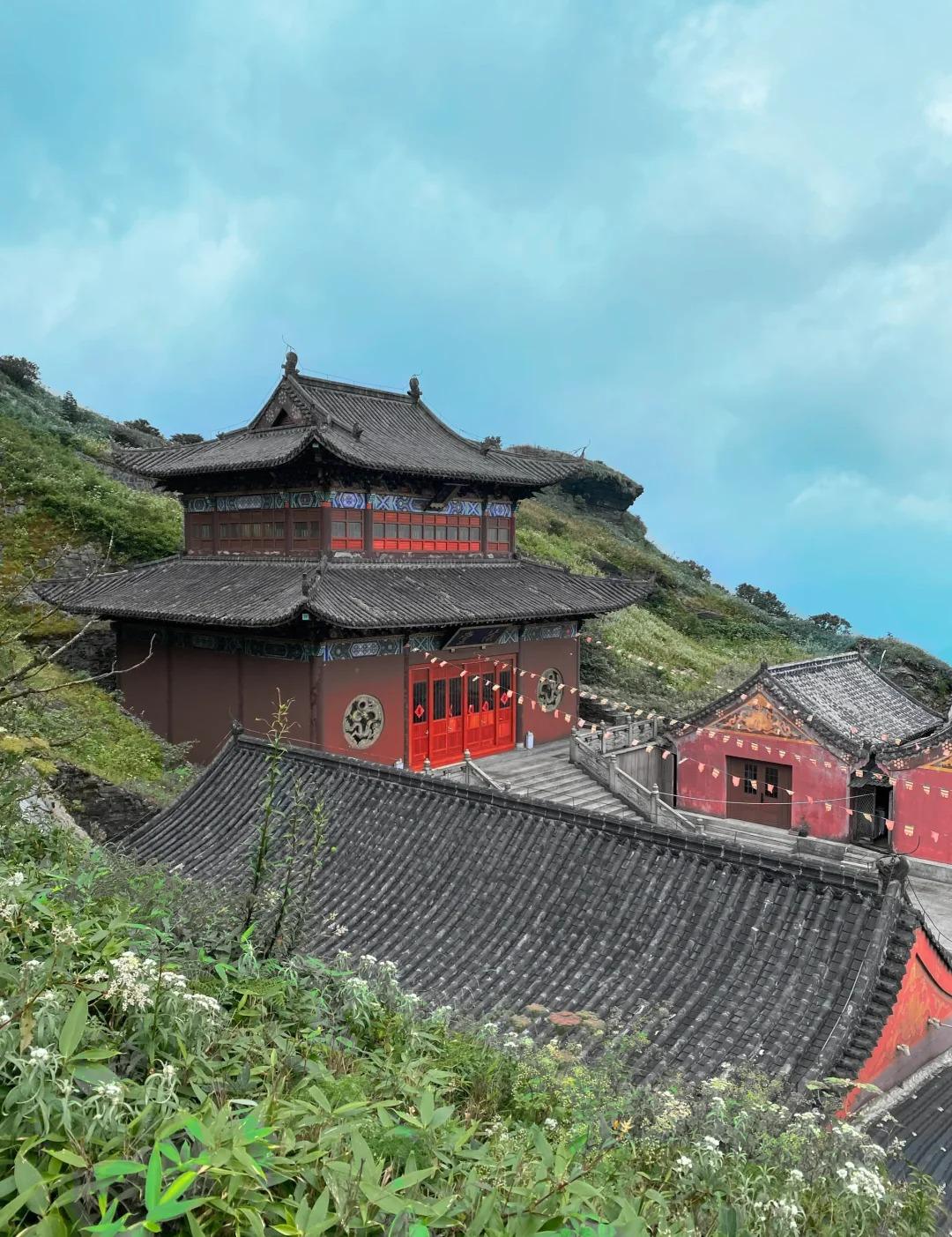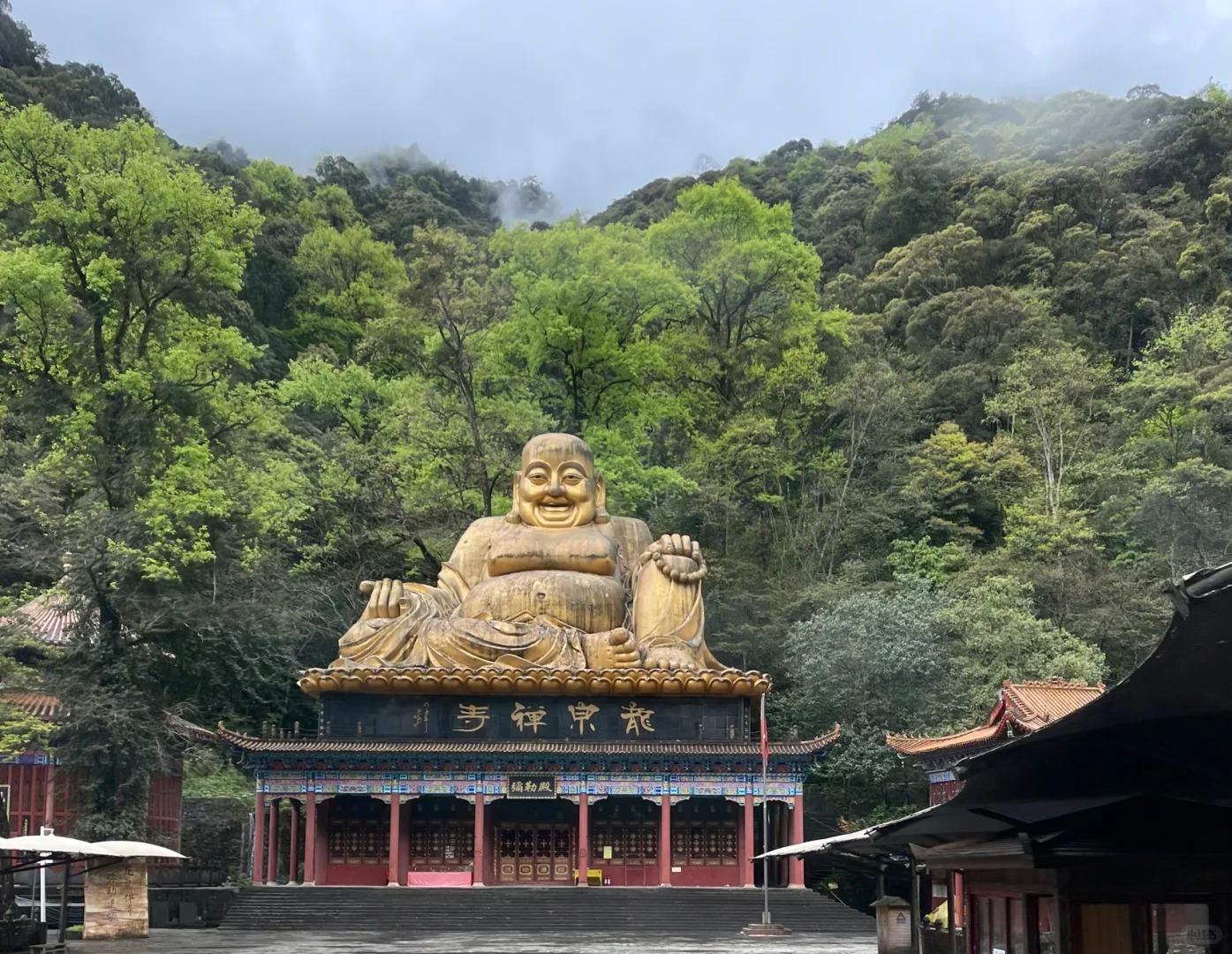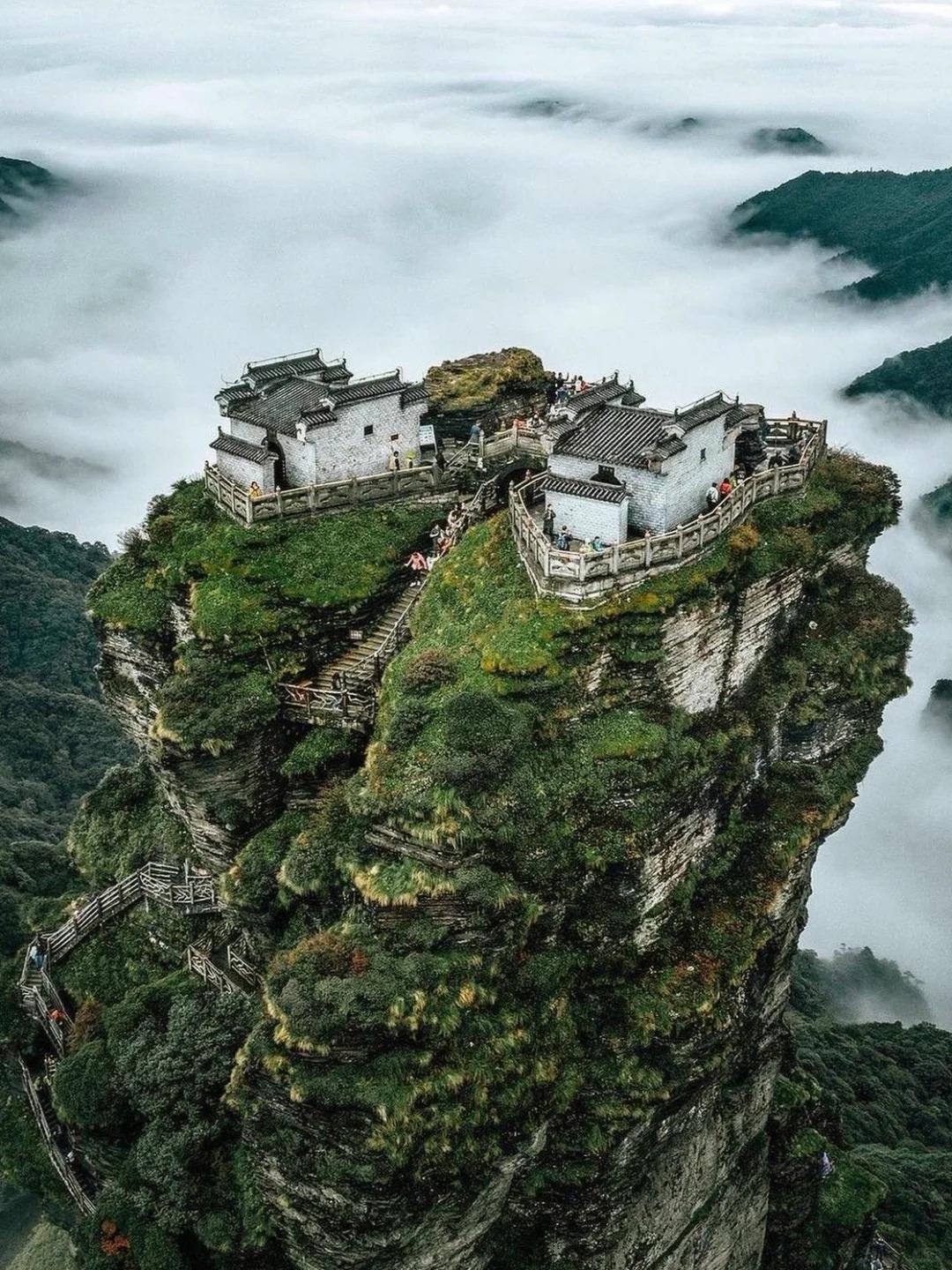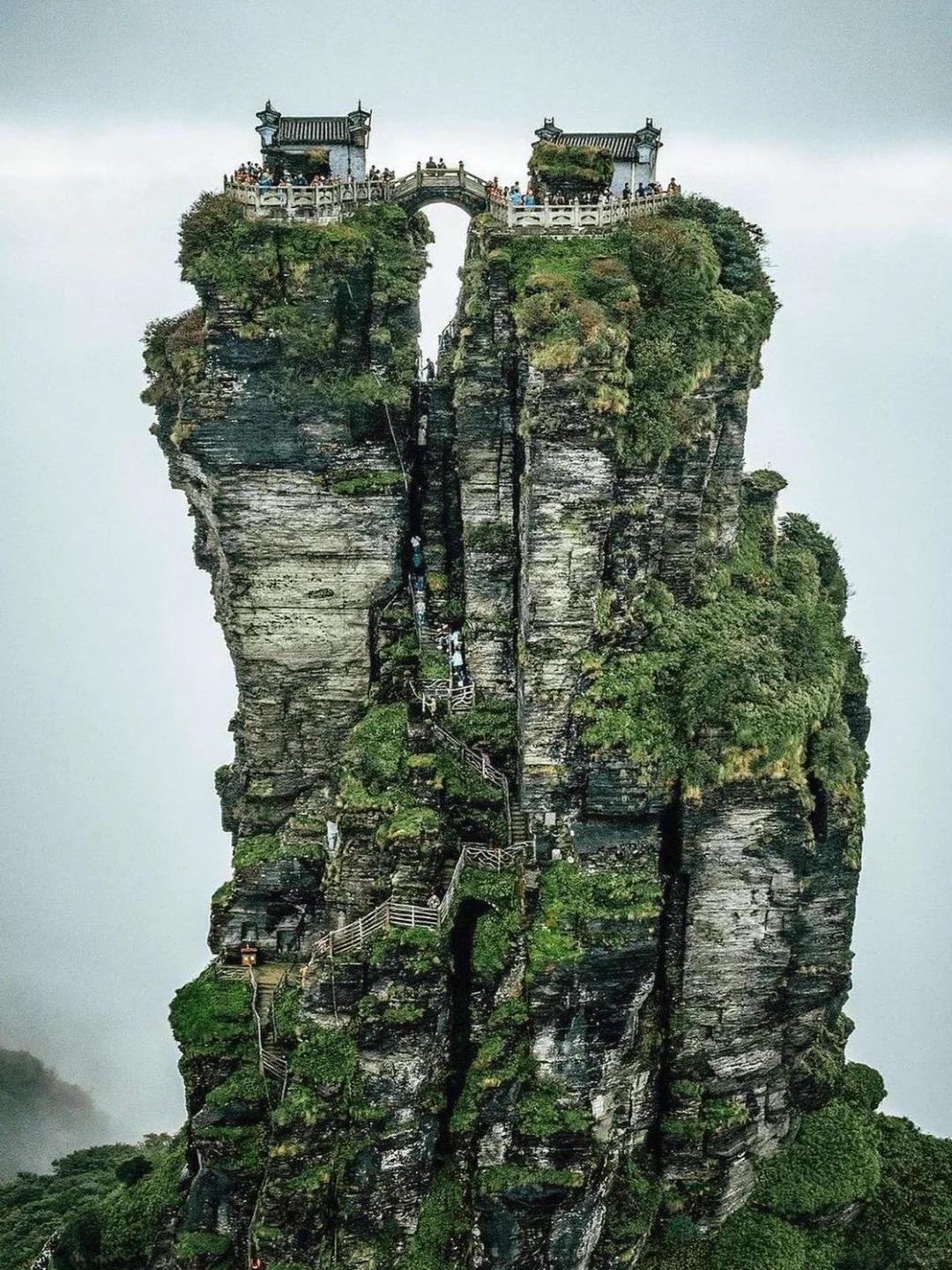Introduction to Fanjingshan Temple
Perched atop the breathtaking “Golden Lotus Peak” of Mount Fanjing in Guizhou Province, China, the Fanjingshan Temple stands as a testament to human devotion and architectural ingenuity. This Buddhist sanctuary, with its unique position straddling two rocky spires, has captivated pilgrims and tourists alike for centuries.
Dating back to the Ming Dynasty (1368-1644), the temple has been a significant site in Chinese Buddhism. Its location on one of China’s five sacred Buddhist mountains imbues it with profound spiritual importance.

Architectural Marvel
The Fanjingshan Temple is a feat of engineering that seems to defy gravity. Two small temples sit atop separate peaks of the Golden Lotus formation, connected by a precipitous bridge.
Key architectural features include:
- Twin temples on adjacent peaks
- Narrow stone bridge linking the structures
- Steep staircases carved into the rock face
The construction of this temple complex, given its precarious location, is a testament to the determination and skill of ancient Chinese builders.

Buddhist Heritage and Spiritual Significance
Fanjingshan Temple holds a special place in Chinese Buddhism as a site dedicated to Maitreya, the future Buddha. It’s believed that Maitreya will attain enlightenment here, making it a powerful place for spiritual practice.
Important aspects of the temple’s religious significance include:
- Statues of Maitreya Buddha
- Ancient Buddhist scriptures and relics
- Legends of celestial beings appearing on the mountain
One popular legend tells of a golden lotus blooming from the peak, giving the formation its name and cementing its status as a sacred site.
The Journey to the Temple
Reaching Fanjingshan Temple is a pilgrimage in itself, offering both physical challenge and spiritual reward. Visitors can choose between:
- A strenuous climb up thousands of stone steps
- A more comfortable ascent via modern cable car
As you ascend, the surrounding landscape unfolds in a panorama of mist-shrouded peaks and lush forests. Many pilgrims view the journey as a metaphor for the Buddhist path to enlightenment – challenging, but ultimately rewarding.

Temple Rituals and Practices
Despite its remote location, Fanjingshan Temple remains an active center of Buddhist practice. Monks perform daily rituals and prayers, maintaining the site’s spiritual energy.
| Event | Description | Timing |
|---|---|---|
| Morning Chanting | Monks recite sutras at dawn | Daily |
| Maitreya Festival | Celebration of the future Buddha | 1st day of 1st lunar month |
| Lantern Offering | Pilgrims light lanterns for blessings | 15th day of 1st lunar month |
Visitors may have the opportunity to observe these practices, and in some cases, participate in simplified versions of Buddhist ceremonies.
Conservation and Restoration
Preserving Fanjingshan Temple is a delicate balance between maintaining its spiritual integrity and accommodating growing tourist interest. Recent efforts include:
- Structural reinforcement of the temples and bridge
- Installation of safety features for visitors
- Strict control of daily visitor numbers
A major restoration project in 2010 helped stabilize the structures and preserve ancient murals and statues within the temples.

Visitor’s Guide to Fanjingshan Temple
Best Times to Visit
- Spring (April-May): Comfortable temperatures, blooming flowers
- Autumn (September-October): Clear skies, vibrant foliage
Admission and Hours
- Open: 8:00 AM – 5:00 PM daily
- Admission: ¥100 (includes entry to Mount Fanjing scenic area)
- Cable car: Additional ¥150 round trip
Etiquette and Tips
- Dress modestly, covering shoulders and knees
- Speak softly and be respectful of worshippers
- Ask permission before photographing monks or ceremonies
- Bring water, snacks, and weather-appropriate clothing
- Be prepared for a physically demanding climb if not using the cable car
As you stand on the narrow bridge between the twin temples, gazing out over the misty peaks of Mount Fanjing, it’s easy to feel a connection to the countless pilgrims who have made this journey before. The thin mountain air, filled with the scent of incense and the distant sound of chanting, creates an atmosphere of profound tranquility.
Whether you’re drawn by spiritual seeking, architectural wonder, or simply the allure of one of China’s most spectacular vistas, a visit to Fanjingshan Temple is an unforgettable experience. It’s a place where the physical and spiritual realms seem to merge, offering a rare glimpse into the heights of both natural beauty and human devotion.
Remember, as you explore this sacred site, that you’re not just a tourist, but a part of the living history of Fanjingshan Temple. Approach with respect, wonder, and an open heart, and you may find that the journey changes you in ways you never expected.






